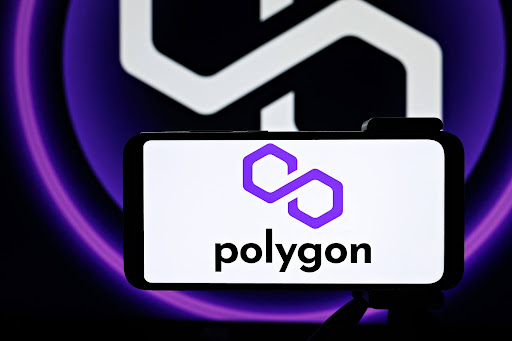Here’s When the Polygon Network Will Stop Using MATIC
18.07.2024 15:56 1 min. read Kosta Gushterov
On July 18, the Polygon network announced plans to update its native token MATIC to a cryptocurrency called POL, with the transition taking place on September 4.
According to Polygon Foundation’s, POL aims to provide the security of the blockchain as an aggregated network, liquidity pool and shared state across multiple chains.
The upgrade will occur in phases, and POL will replace MATIC as the token for gas and stacking activities for the Polygon chain.
Polygon’s road assured users that MATIC holders in the PoS chain do not need to take any action as their tokens will be automatically converted to POL.
Users using MATIC in Polygon’s zkEVM rollup, centralized exchanges, or Ethereum’s blockchain are provided detailed instructions in a blog post.
There are no immediate deadlines for them to migrate to POL, but the community will be allowed to set deadlines in the future.
Polygon described POL as a hyperproductive token designed to provide valuable services across any circuit in the Polygon network, including AggLayer.
The community expects that POL will play a key role in Polygon’s stacking hub, which will be released in 2025. This includes features such as block generation, zero-knowledge (ZK) proof generation, and participation in data availability committees (DAC).
-
1
Dogecoin Balances on $0.23 Support as Whales and ETFs Shift the Narrative
25.09.2025 22:15 2 min. read -
2
Trader Turns $3K Into $2M With Meme Coin
04.10.2025 15:00 2 min. read -
3
Solana Price Prediction: Time to Buy the Dip Amid Crypto Crash?
12.10.2025 3:35 4 min. read -
4
Bitcoin and Ethereum ETFs See Over $1.2 Billion in Inflows as Institutions Accelerate Buying
04.10.2025 18:00 2 min. read -
5
Ethereum Foundation Converts ETH to Stablecoins Ahead of Fusaka Upgrade
04.10.2025 22:00 2 min. read
Mass Sell-Off Hits Bitcoin and Ethereum ETFs as Geopolitics Fuel Panic
Investors are retreating from U.S. Bitcoin and Ethereum ETFs in a dramatic sell-off, as uncertainty from geopolitical tensions and a recent crypto liquidation spooks the market. On Thursday,
Ripple’s Secret $1B XRP Strategy Could Redefine Corporate Crypto
Ripple Labs is reportedly gearing up for a major fundraising initiative that could see the company purchase around $1 billion worth of XRP, according to people familiar with the matter.
Bitcoin and Ethereum Face $6 Billion Reckoning as Bears Tighten Grip
Crypto markets are tense today as nearly $6 billion in Bitcoin and Ethereum options reach expiration, fueling anxiety over further downside after a volatile week.
Bitcoin ETFs See Heavy Outflows as Ethereum Funds Draw Fresh Inflows
U.S. crypto ETFs moved in opposite directions on Wednesday as investors continued to tread carefully after last week’s flash crash.
-
1
Dogecoin Balances on $0.23 Support as Whales and ETFs Shift the Narrative
25.09.2025 22:15 2 min. read -
2
Trader Turns $3K Into $2M With Meme Coin
04.10.2025 15:00 2 min. read -
3
Solana Price Prediction: Time to Buy the Dip Amid Crypto Crash?
12.10.2025 3:35 4 min. read -
4
Bitcoin and Ethereum ETFs See Over $1.2 Billion in Inflows as Institutions Accelerate Buying
04.10.2025 18:00 2 min. read -
5
Ethereum Foundation Converts ETH to Stablecoins Ahead of Fusaka Upgrade
04.10.2025 22:00 2 min. read
The cryptocurrency market exceeded $2 trillion in capitalization during 2021, and early investors who backed successful presales saw returns of up to 500% quickly after launch.
Presale projects are back in the spotlight, and Lightchain AI and Wall Street Pepe are among the top contenders.
In a move that underscores its ambition to bridge crypto and traditional finance, Ripple is expanding the role of its newly acquired prime brokerage platform, Hidden Road.
The crypto market is boiling as traders look for the next big meme coin.
S&P 500 is continuing its surge, riding the wave of the AI boom. However, not all AI stocks are good buy at this moment. Here are two of them, which you should potentially reconsider.
In a groundbreaking move that marks the largest acquisition in the history of the cryptocurrency industry, one fintech giant has made waves by securing a major stablecoin platform in a $1.1 billion deal.
Last week saw a historic rebound in crypto venture activity, with $3.5 billion raised across 28 funding rounds, marking the highest weekly total ever recorded.
Jamie Coutts from Real Vision believes Bitcoin (BTC) may be nearing a significant price rally due to favorable market conditions.
Geopolitical conflict rattles markets, but history shows panic selling crypto in response is usually the wrong move.
Can this corporate confidence give the market momentum and start the next crypto rally?
Recent polls of crypto enthusiasts and traders have revealed an evolving consensus: Rexas Finance (RXS) is the token to consider in 2025, overtaking well-known names like Cardano (ADA) and Dogecoin (DOGE).
Hong Kong’s spot Bitcoin ETFs have reached over 2 billion Hong Kong dollars (around $256 million) in assets under management (AUM).
Hong Kong-based Ming Shing Group Holdings Limited (NASDAQ: MSW) has unveiled a landmark deal to purchase 4,250 BTC in a transaction worth nearly $483 million, signaling a bold diversification move beyond its core wet trades business.
Hong Kong authorities have dismantled a sophisticated money laundering network accused of channeling over HK$118 million (USD $15 million) through a web of local bank accounts and crypto exchange shops.
Hong Kong has taken a bold step towards strengthening its position as a global digital asset hub by introducing regulations that allow licensed crypto exchanges to offer staking services.
As of August 1, 2025, Hong Kong’s Stablecoin Ordinance is officially in force, establishing one of the world’s most rigorous regulatory frameworks for fiat-backed stablecoins.
Hong Kong's Securities and Futures Commission (SFC) has kicked off 2025 by approving two more crypto trading platforms, continuing its efforts to regulate and grow the virtual asset sector.
Hong Kong has officially launched a comprehensive regulatory framework for fiat-backed stablecoins, signaling a major shift in how the city oversees digital assets.
China Financial Leasing Group, a Hong Kong-listed firm (HKEX: 2312), has unveiled plans to raise HK$86.5 million ($11.1 million) to fund the creation of a cryptocurrency and artificial intelligence (AI) investment platform.


